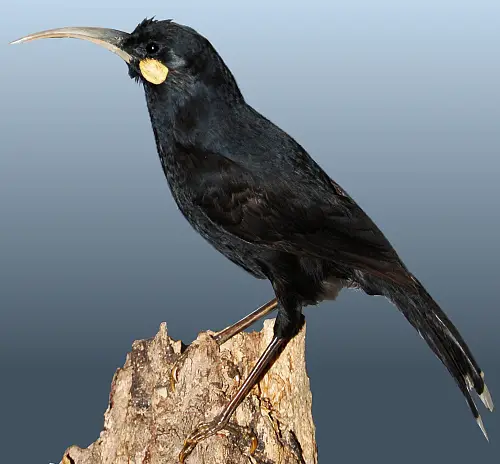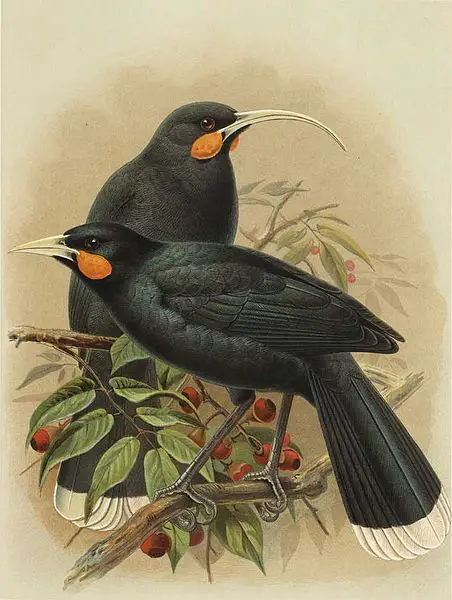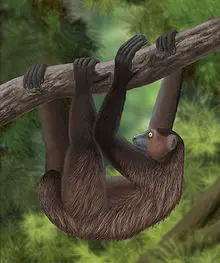Huia
The Huia was the largest species of New Zealand wattlebird. It was endemic to New Zealand’s North Island until the early 20th century. The last confirmed sighting of a Huia was in 1907 at the Tararua Ranges. There were credible sightings reported in 1922 near Wellington, and the last reported sighting was in the early 1960s at Te Urewera National Park.
This bird had black plumage that had a slight green metallic tinge to it. It also had distinctive bright orange round wattles at the gape. Their eyes were brown, they had an ivory white beak which was greyish at the base of it. They also had long and bluish grey legs and feet, but their claws were light brown. They had 12 long and glossy black tail feathers which had tips of about 2.5 to 3 cm in white. Juvenile or immature Huia’s had small and pale wattles, duller plumage which was flecked with brown, and a reddish tinge to the white tips of the tail feathers. Only the beak of the young female Huia was slightly curved. Several true albino Huia were also recorded.
Sexual dimorphism is very pronounced in the Huia. The male Huia’s beak was quit short at only 60 mm and arched slightly downwards. It was also robust. The female’s beak was longer and finer, at about 104 mm and curved downward. It is thought that the two different beaks are because they consumed different food sources. It has been suggested that females were the main provider of food for their chicks via regurgitation, and this enabled the female’s bill to evolve into a longer bill.
Other than beak size, males were also smaller than females. The male Huia was only 45 cm long, while females were 48 cm long. The male’s tail was 20cm long and had a wingspan of around 22 cm, while the female’s tale was 19.5 to 20 cm long, and had a wingspan of around 20 cm.
Due to midden and sub-fossil remains, it suggests that the Huia was actually rather widespread across both montane native forest and lowland in the North Island. It ranged from Cape Regina to Wellington and to the Aorangi Range. As there are not many fossils in central North Island and at Hawke’s Bay, it is thought that the Huia did not prefer these habitats. It is known that they inhabited two types of forets in New Zealand – broad-leaf forests where there was a dense understorey, as well as the Southern Beech forests.
For food, the Huia foraged on decaying wood most of the time. Although it was a specialised predator of the larvae of the Huhu beetle, it did also eat other insects such as Weta, insect larvae, and spiders. It also ate fruit.




